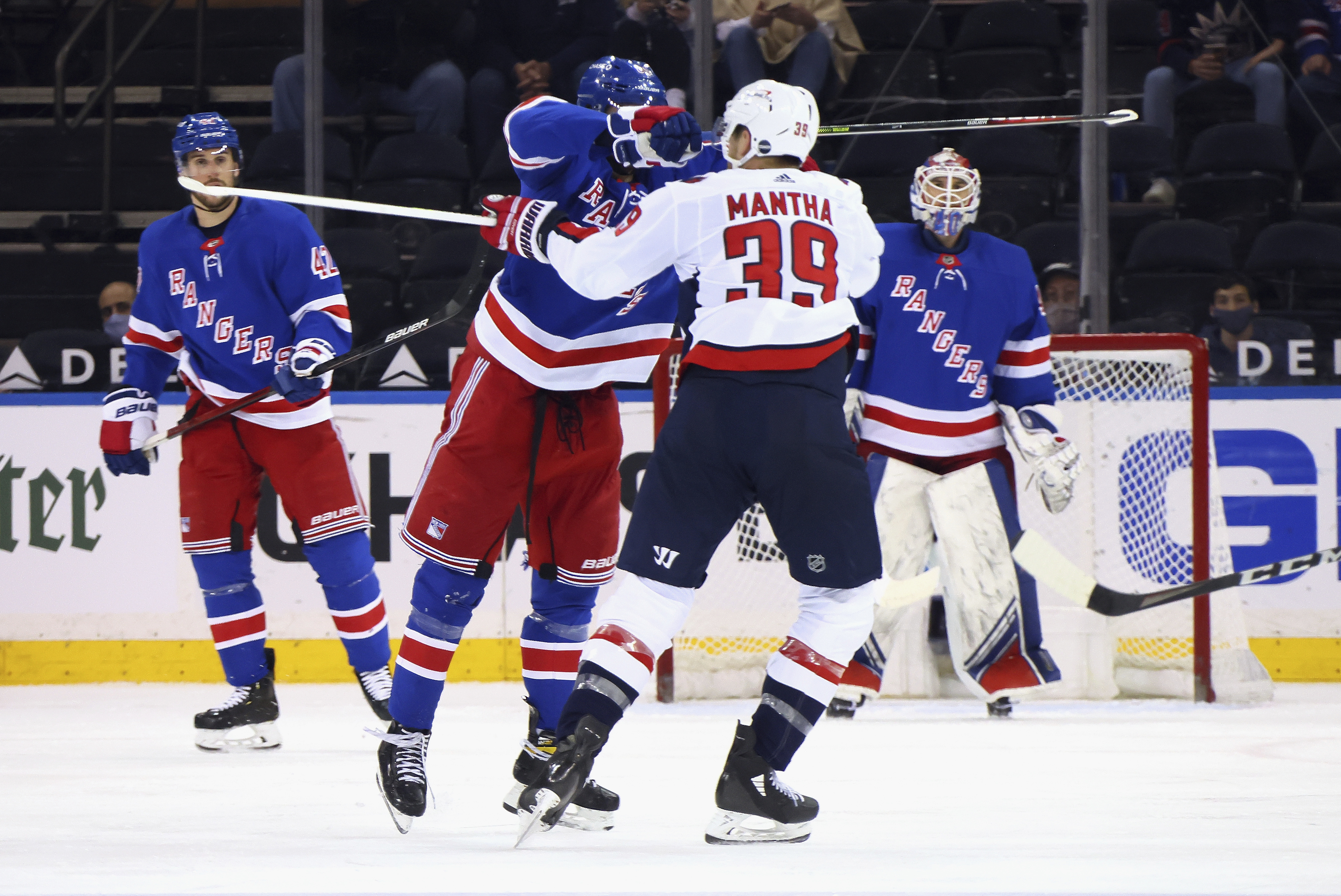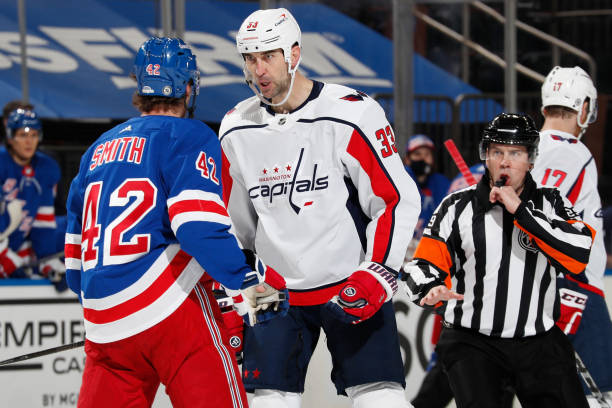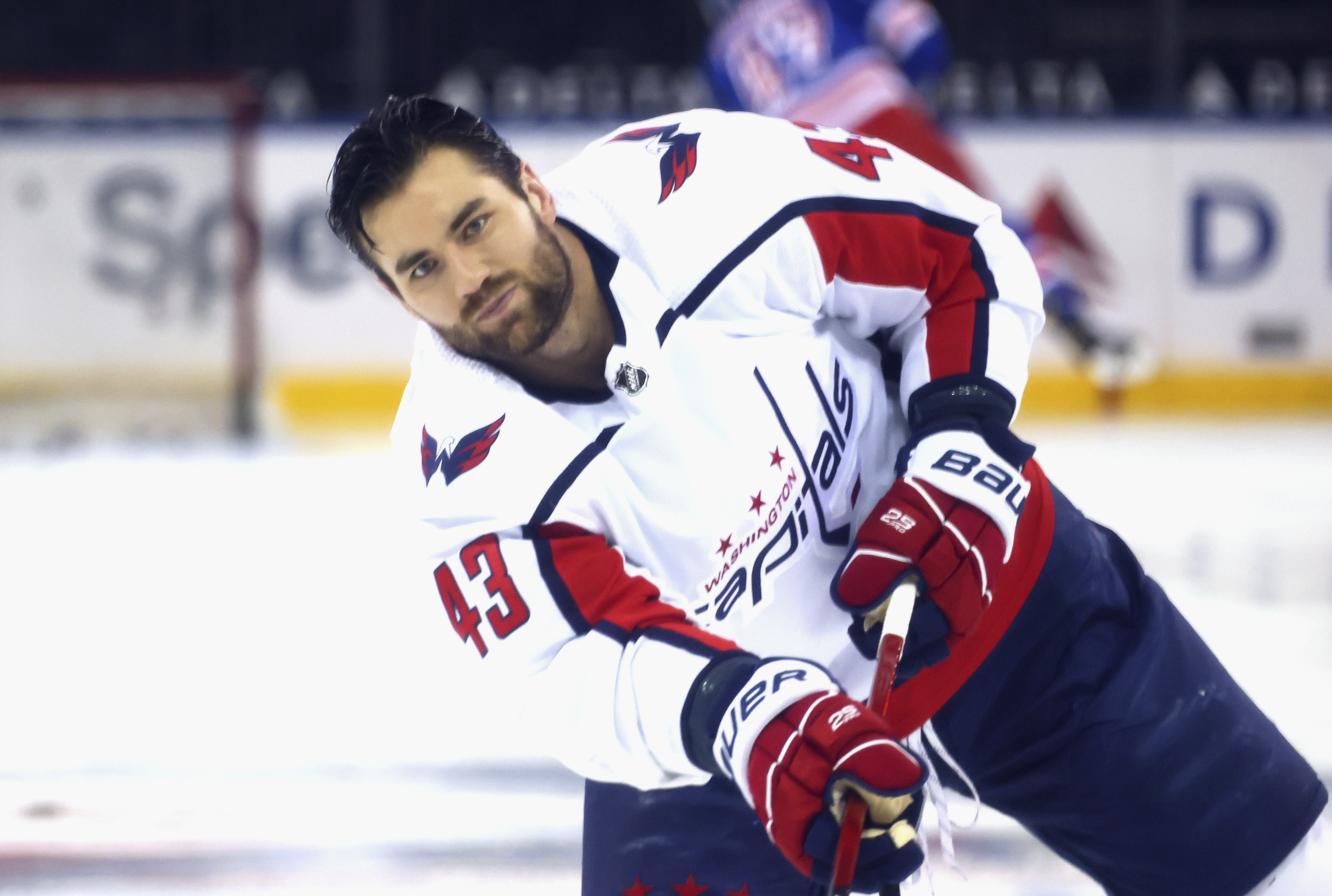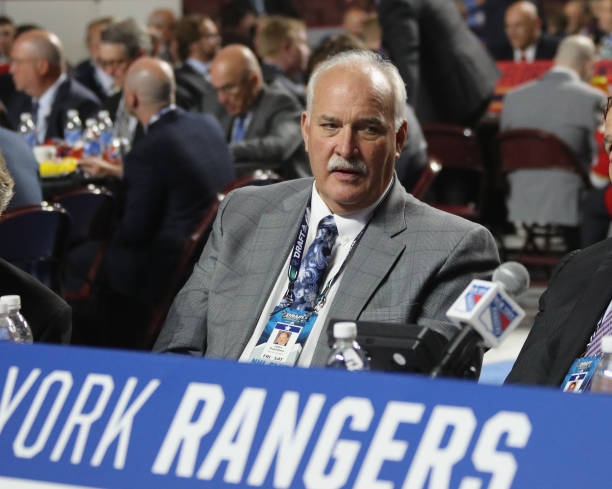Why the Rangers Should Be Tougher to Play Against Under Gerard Gallant
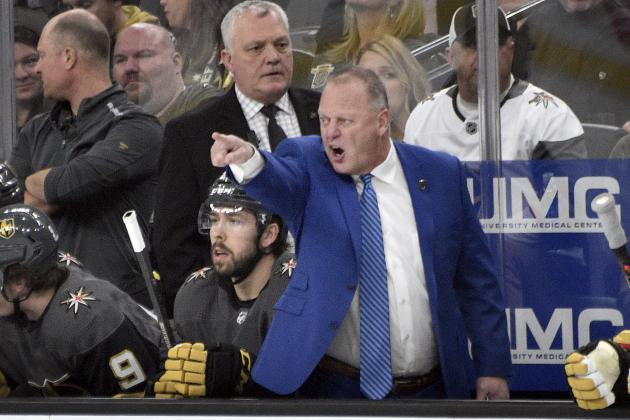
New York Rangers president and general manager Chris Drury made his first major move on Monday when he hired Gerard Gallant to become the team's next head coach.
As the team looks to transition from a rebuilding philosophy to a playoff team, Gallant is a logical pick. The former head coach of the Columbus Blue Jackets, Florida Panthers and Vegas Golden Knights has manned the bench in 541 regular-season NHL games.
He has a lot of clout with veteran players but also has experience dealing with young players, of which the Rangers have many. Gallant was head coach of the Saint John Sea Dogs of the QMJHL from 2009 through 2012, winning the championship twice.
When the Rangers' season ended with dramatic upheaval, much was made of the team's supposed need to become harder to play against.
Typically, this comes in the form of suggesting the team bring in players who are big, brawny skaters who will strike fear in the opposition.
There is no doubt the Rangers need to become a tougher team, and there is room for additions of that type. However, by hiring Gallant, the Rangers brought in someone who has the qualifications to fix many of the problems with the players already within the organization.
Defining Toughness
The problem with proclaiming that the Rangers need to add some toughness, or grit, or a north-south style, is not that it's necessarily incorrect. Rather, it alone is a list of platitudes that are insufficient in diagnosing in what areas of the game the team struggled in and how those can be addressed.
If a team was in dire need of an elite playmaker, it would be insufficient to proclaim that team needed "skill." After all, Alexander Ovechkin is very skilled, but passing is not his game. Along the same lines, "grit" players are not a monolith.
Matt Martin throws a lot of punishing hits. Jordan Staal is a puck hound below the goal line. Mikko Rantanen is incredibly hard to knock off the puck. Joe Pavelski is one of the best net-front players in the league. All of these players conceivably fit the label of "tough," yet they provide different abilities.
Grit is an amorphous concept, but the Rangers won't be improved by adding just any big, physical player. The task for Gallant and Drury will be in evaluating how the team struggled tactically last season, what adjustments Gallant can make to fix the issues and which players are needed to fit that plan.
When the two brainstorm on those matters, and they likely already have, they may find that a lot of the solutions are already in-house.
The Lack of a North-South Component
The 2020-21 Rangers were often described as being heavily reliant on east-west plays but lacked a north-south style to complement it. This is true, but it requires more specific analysis what this actually meant in practice.
The Rangers have a number of forwards (plus one Adam Fox) who are very good, if not elite, at carrying the puck and making high-difficulty passes. Either through a transition rush or by carrying past defenders in the neutral zone, the Rangers would enter the offensive zone with clean possession, and then score off the rush, often with a pass across the slot.
This is an effective way to generate offense and score goals. When it works, it really works. The Rangers punished teams that were slow, disorganized or conservative in defending the neutral zone.

However, sometimes there isn't space to carry in the neutral zone. The puck needs to be sent past the opposing defense and then recovered in the offensive zone. From there, an offensive team can either recover the puck and make a quick strike while the defending team is unprepared. It can also cycle the puck, wear them down and wait for a defender to make a mistake.
This is where the Rangers struggled. When pucks were dumped into the offensive zone, they didn't win many races, and when they didn't win those races, their forecheck didn't do enough to put the opposition under pressure and create turnovers.
Tracking data recorded by Corey Sznajder over a random sample of games during the regular season reveals that the Rangers ranked 28th out of 31 teams in generating shots off forechecks and cycles (compared to 19th by rush chances).
Another bellwether is the lack of shots coming from defensemen. Curated data available at Evolving Hockey shows that Rangers' defensemen averaged 13.23 shot attempts per-game at five-on-five, a number which ranked them 27th among 31 NHL teams.
There will be multiple reasons for this. Personnel plays a part—are more defensemen needed who have the skill and mentality to shoot more? Perhaps, and more on that later. Still, most NHL defensemen are at least competent at directing the puck towards goal in hope of finding screens, rebounds and deflections. Missing during the season was the low-to-high pass to defensemen, which is often generated from forechecks and cycles that start near the goal line.
The Rangers were predictable offensively last season. They relied on carrying the puck cleanly into the offensive zone and then moving it laterally through the slot for shooting opportunities. With so much talent, it often worked. But the limits of this style showed against the Islanders. Their rivals in Long Island knew the type of plays that were coming and had the ideal composition and tactics to thwart it. The Rangers had no Plan B, and it showed.
How Gallant Can Fix the Rangers' North-South Game
The Rangers could and likely will make an addition or two to fill the need for a more vertical game. That discussion will come. However, the Rangers already have some personnel capable of playing this style. They just need a leader like Gallant to steer them in the right direction.
Gallant's yet unnamed assistant coaches will have a lot of input into the team's tactics, and his full vision won't truly be understood until the team gives some hints on the ice during the preseason. Nevertheless, one can look at his preferences in past NHL stops and make some educated guesses.
In all likelihood, players will have a more aggressive forechecking style. Under David Quinn, the Rangers were fairly passive. Under Gallant, the Vegas Golden Knights forwards were more frequently given the green light to pressure the puck in the offensive zone and try to create numbers advantages.
One aspect that will almost certainly change is in how Gallant deploys his defensemen. Under Quinn, the Rangers' defensemen played it safe and almost conceded the neutral zone and blue line on purpose. Gallant will ask his defensemen to play a higher line and break up opposing rushes and send the puck back in deep, allowing for another attempt at a forecheck against more fatigued opposition trying to once again recover the puck and move it up the ice.
Under Quinn, the Rangers were so fearful of getting beat up the ice that they backed off. This succeeded in preventing odd-man rushes but did so at the expense of the team's ability to pressure the puck. Expect Gallant to implement systems that encourage his five-man units to more aggressively suffocate the opposition, create turnovers and lead to more cycle opportunities.
Internal Solutions Are Available
Maybe the Rangers aren't overly big and aggressive like the Islanders or Carolina Hurricanes, but it's difficult to believe the forwards already on the roster aren't capable of sustaining forechecks and cycles. Mika Zibanejad, Pavel Buchnevich, and Filip Chytil (the latter two are restricted free agents this offseason) are among the team's forwards who possess varying size and speed, while Chris Kreider is the ideal archetype of a north-south winger. None of them maximized their potential in that regard. What gives?
Equal to Gallant's tactical changes will be the implementation of a respected voice in the locker room. Sometimes it's not what's being said but rather who is saying it and how. For whatever reason, Quinn, a rookie NHL head coach, struggled to get his message through to the team about wanting a more vertical style. Even if that was not Quinn's fault, perception matters. Gallant has built a reputation as a great communicator who commands the respect of even the most successful veteran players.
Perhaps counterintuitively, incoming reinforcements on defense will better prepare the Rangers for initiating successful forechecks. Much like an NFL receiver can only make plays if his quarterback makes the right throws, forechecking forwards can only make the most of their abilities when defensemen put the puck into the best spots for them to retrieve it.
Blindly throwing the puck below the goal line isn't an ideal strategy. The best puck-moving defensemen can read the players in front of them and see where mismatches or overloads are developing. Some situations call for hard wraps around the boards. Some call for purposeful caroms off the end boards into the slot. Occasionally it's a light flip into the near corner. Purposeful placement of the puck can help a forechecker win a race or can turn a 50/50 battle into a 60/40 one.
The Rangers have one of the best in this regard in Adam Fox, but he needs help. Gallant can look to two rookies. Zac Jones, who made his debut at the end of last season, and Nils Lundkvist, named the Swedish Hockey League's best Swedish-born defenseman, are both likely to play some if not all of the 2021-22 season at the NHL level. Both are excellent puck distributors who will make the right decisions to create these entries into the offensive zone and then eagerly shoot the puck from the point when it comes to them.
K'Andre Miller is also a great fit for a more aggressive forechecking system. With his strength, skating and long reach, he was almost born to aggressively check in the neutral zone. His puck skills will also develop more as he plays.
Some of the Rangers' hopes for becoming tougher to play against depend on being patient with Alexis Lafreniere and Kaapo Kakko (Kakko turned 20 on February 13). Those two were among the Rangers' better forecheckers and cyclers of the puck last season despite being teenagers. There's good reason to believe they will become forces in this regard as they grow up physically and adapt to the NHL style under a qualified head coach.
The 6'4" Morgan Barron could also play a role for the Rangers next season, while defensive prospects Braden Schneider and Matthew Robertson are close to NHL-ready and play a hard-nosed game in the neutral zone.
The Blueshirts Are Already On Their Way
Drury has a win-now mindset, and that's a fair expectation. He'll explore the trade and free-agent markets to see what external help he can find. The danger is in overcorrecting and amassing a number of players who ostensibly fit "gritty" profiles but who don't coherently fit into the structure of what the Rangers are trying to do. This team's bread-and-butter will be about carrying the puck and making skilled plays laterally in the offensive zone.
Finishing checks and standing up for teammates after a "Tom Wilson incident" arguably have their roles in hockey, but that's not where the Rangers need to become tougher to play against. It's about diversifying the way the team can generate offense so that it's not predictable and becomes more adaptable to different styles of play.
The Rangers need a curveball to match their fastball. Ironically, establishing that north-south game will open up more opportunities for them to carry the puck and make plays off the rush as teams will be forced to back off amid a guessing game. The Rangers already have a number of great options to begin this fix internally, and new head coach Gallant is a strong choice to lead the team to add a north-south component to its game without straying away from who they are as a unit of immensely skilled players.







